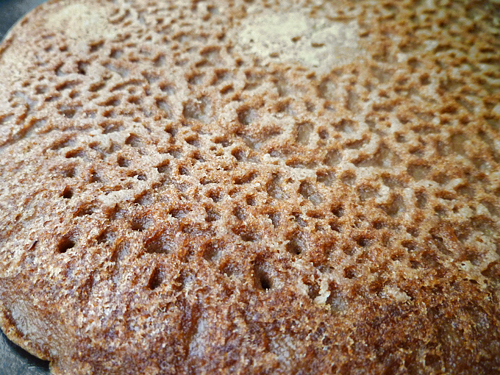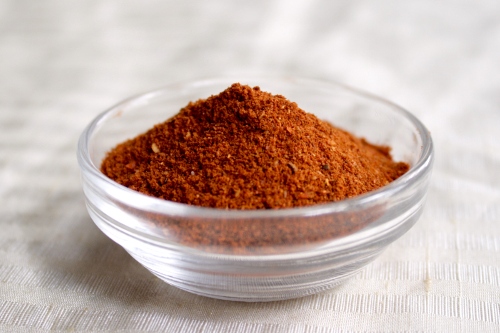Ethiopia Has the Finest Indigenous Cuisine in Africa
17/10/16 10:24:amYes, that’s quite a claim – especially for a country that first pinged on most peoples’ radar for famine and hunger. But, it's true - and yes, very ironic.
I have loved traditional Ethiopian food from a very early age. From the age of 7 I used to muck about with my little Ethiopian pals in the small town of Degan located 400 km north east of Addis Ababa. Sometimes I would take them back to my home where my Mum would hand out packet biscuits and homemade limeade in her kitchen. Boys with names like Abdu, Yessuf and Mohammed would guzzle down the fridge-chilled lime and sugar thirst buster and, with mum's encouragement, stuff their pockets with biscuits for later.
Their mums would return the hospitality by calling me into their round thatched houses with circular walls of wattle and daub and insist, in that kindly but forceful way only mothers can, that I sit down and eat something! It was always delicious. A fragment of flat injera the size of a dinner plate made of millet flour with a dollop of thick shiro wat ladled onto it is a taste that still takes me back in time. The smooth, thick, ochre coloured sauce is made of garlic, chickpea flour, onions, tomato and spices. This vegetarian meal is always a safe bet for a delicate tummy at any Ethiopian restaurant.
Poor peasant farmers use mashela, or millet flour, to make injera. Those with more means will use teff flour to make injera. Teff is unique to the high mountains of Ethiopia and thought to be one of the first grains to be cultivated by humans from about 4,000 BCE. It has become fashionable as a superfood in the west since it has been shown to be rich in iron and protein.

–Injera
Injera is a flat, spongy and circular pancake that is generally about 60 cm in diameter. It is made from a sourdough batter that has been left to ferment for two to three days. A small amount is kept from each batch to start the fermentation of the next batch. The cook holds aloft a small gourd of the batter and pours it onto a hot clay griddle in a wide sweeping spiral starting at the outer edges and ending in the middle. It is covered by a domed clay lid for about 2 – 3 minutes and when cooked it slides off the perfectly smooth griddle onto a growing pile of fresh injera in a wicker basket.
Wat, or Wott, is a generic term for a thick sauce or stew that can be vegetarian, vegan or made with beef, chicken, goat, lamb or fish but never pork. Both Orthodox Christianity and Islam prohibit pork. Ethiopia is a very religious country and this can be seen in Ethiopia's culinary traditions.
A meal of injera-be-wat will usually be served on a large round platter made of long, often colour-dyed, strands of grass-like stalks tightly bound together almost like rope and woven in a circular shape. It is not quite wicker- work but very similar. One or more wats will be laid out in separate portions on a bed of flat injera. Ethiopian etiquette dictates eating with the right hand and never the left. A piece of spongy injera is literally torn away and dipped in the wat sauce or rolled around a piece of vegetable or meat and brought to the mouth. Sharing a meal in Ethiopia is a truly communal experience.
What really sets Ethiopian cuisine apart is the diversity of wat flavours and spice mixes. In the same sense that Indian food has many different types of curries that are generically called curry, Ethiopian cooks use many different spices to create intensely spicy or delicately flavoured savoury meals.
There is evidence going back over 2,000 years of an ancient trade between Ethiopia and parts of Asia. Coins from the Axumite empire have been found in China. Not surprisingly, Ethiopian and Indian cuisine share many of the same spices but they do differ in the way they are cooked and blended.
Perhaps the most well-known spice blend in Ethiopian cooking is berbere. There is a lot about berbere online but essentially, it is a finely ground red powder blend of spices ranging from cumin, fenugreek, garlic, ginger, salt, black pepper, cayenne and cardamom, to name but a few. There are everyday blends and wedding feast blends of much richer complexity with perhaps up to a dozen different spices. A mother proudly passes her own special, often secret, recipe blend onto her daughter.

– Berbere
A few years ago I imported 8 Kg of high quality, homemade berbere into New Zealand. I insisted my Degan friends and I calculate a fairtrade price based on the hours it took them to prepare the berbere and the average wage of a local bus driver. I proposed this as a reference point because this is considered skilled, desirable work by local people. The berbere was of superb quality because, as my friends told me, it was made with love and as a thank you to me and my brother Andrew for our part in the various projects we have pulled off together to benefit our community. My Kiwi friends and I have been slowly working our way through this stash ever since. I keep it in the fridge. It’s perfect with any kind of meat especially bbqs, Italian food and things that have some oiliness like grilled cheese because the oil liberates the complex flavours in the berbere. A simple cheese on toast is rendered heavenly with a magic dusting of berbere. A small saucer with a splash of olive oil mixed with some berbere stirred into a paste is a perfect and intensely flavoured dip that is much more than just ‘hot’. The savoury flavours are rich and layered. Sprinkle berbere on some salted kettle fried potato chips/ crisps and they’ll never taste as good again.
Ethiopian diaspora people have settled in many countries. Consequently, there are Ethiopian restaurants all over the world including New Zealand, Australia, North America and Europe.
Ethiopians are very proud that three of the world’s great religions have historical associations with Ethiopia. It was one of the first countries outside the Roman Empire to have a Christian King in 356 AD and in 615 AD Ethiopians protected the Prophet Mohammed as a refugee from his persecutors in Arabia. As a result, the Prophet is said to have instructed his followers that, in the future, Ethiopia should be the only country in the world to be spared Jihad. Perhaps this is why Muslim and Christian Ethiopians have a long history of peaceful coexistence. A tribe of African Jews known as Bet a Israel (House of Israel) have been recognised as a lost tribe of African Jews. Religions often have dietary rules and traditions. This very long history with three of the world’s oldest religions is said to have influenced the development of the complex and diverse culinary tradition in Ethiopia. There are other factors too such as the diversity of landscapes and environments from the high mountain plateaus to the dry lowlands which give rise to a great range of foodstuffs and therefore cooking styles. For example, in the wet southern lowlands, false banana, otherwise know as Enset (Enset. ventricosum), is a staple food crop which is never seen in the dry north and east.
These religions have many holy days and fasting periods. In many restaurants what is available on the menu will depend on the date on the religious calendar. For example, devout Orthodox Christians will not eat meat or dairy on Wednesdays or Fridays and during the Lent period. Beyaynetu which loosely translates as Selection or Assortment is one of my favourites that is always available on a fasting day known as a Tsom day. Up to six different vegetarian dishes with a variety of colours, pulses, vegetables and spices are arranged in a circle around the outside edge of a platter of injera. Beyaynetu is not only fantastically healthy but absolutely delicious and a great way to try six different dishes in one meal.
I love eating out in Addis Ababa.
Recent Posts
Show me my Country – Part 3
Oct 1, 2017, 10:58 PM
Wild baboons greet us in the Simien Mountains, and we visit the legendary castles of Gondar on the…
Show me my Country – Part 2
Aug 22, 2017, 11:56 AM
Day one of our big Ethiopian Adventure brings back memories and reaches new heights.
Show me my Country of Ethiopia – Part 1
Aug 8, 2017, 11:56 AM
Five men celebrate a lifetime of friendship on a road trip in northern Ethiopia.
We Fly With Ethiopian Airlines
Jan 15, 2017, 12:59 PM
One of my most striking memories, as a young boy in the early 1970s, was the flight home from…
Ethiopian Genna – a different kind of Christmas
Jan 15, 2017, 11:05 AM
The Ethiopian Orthodox Church Christmas religious holiday is called Genna. The birth of Jesus Christ…
Ethiopia's Funky Flamingos
Dec 9, 2016, 1:39 PM
"I had never seen such a large body of water before and I can still see the huge waves of airborne…
Why is Ethiopia considered the "Roof of Africa?"
Dec 1, 2016, 2:27 PM
As a boy, I remember being fascinated and enthralled by these mysterious mountains.
Ethiopia Has the Finest Indigenous Cuisine in Africa
Oct 17, 2016, 10:24 AM
Let me tell you about the amazing cuisines of Ethiopia
Even Time is Different in Ethiopia
Oct 12, 2016, 11:56 AM
Where did the time go? Ethiopia is still in the 20th Century!
– Article by Sam Cunningham
